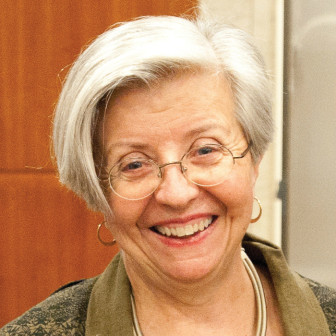 How many organizations do you know that have put themselves out of business — voluntarily? I am acquainted with some that folded or merged, but I am hard-pressed to think of one that declared victory, celebrated and sunsetted. Yet, that’s exactly what happened last spring when the Coalition for Science After School (CSAS) — a national partnership of out-of-school time organizations and science institutions — held a farewell conference in San Francisco.
How many organizations do you know that have put themselves out of business — voluntarily? I am acquainted with some that folded or merged, but I am hard-pressed to think of one that declared victory, celebrated and sunsetted. Yet, that’s exactly what happened last spring when the Coalition for Science After School (CSAS) — a national partnership of out-of-school time organizations and science institutions — held a farewell conference in San Francisco.
This Coalition was formed 10 years ago with support from the National Science Foundation and leadership from three science centers and three youth organizations. Its stated mission was to “strive to make science, technology, engineering and math integral components of afterschool and summer programming by bringing together the experience and commitment of thousands of individuals and organizations across the country. By bridging the afterschool and youth development community with science-rich institutions such as museums, science centers, universities and corporations, the Coalition works to increase the quality and quantity of science engagement in afterschool and summer learning settings.”
On the national level, the Coalition informed public policy, created partnerships, networked hundreds of professionals, convened several national conferences and fashioned a set of highly usable tools — including a parent-friendly “Connectory” that catalogued more than 5,000 informal science programs. CSAS maintained a lean infrastructure governed by a 12-member national Steering Committee and employed a small professional staff, composed of a full-time director and a handful of part-time specialists. It never became an independent non-profit, choosing instead to be hosted by one of its members — initially The After School Corporation and, later, the Lawrence Hall of Science.
In declaring victory, the Coalition observed that STEM (science, technology, engineering and math) had now become virtually ubiquitous in after-school programming. Several national youth-serving organizations now sponsor major STEM initiatives, including Big Brothers Big Sisters, Boys & Girls Clubs of America, 4-H, Girls Incorporated and the YMCA of the USA. Locally, youth agency partnerships with science-rich institutions, such as youth and science museums, have proliferated during the past decade. And a STEM Funders Network helps to recruit other philanthropic partners and to strategize how private dollars can leverage change in the ways public funds support the integration of quality science in out-of-school time programs.
There is no question that federal 21st Century Community Learning Center support has contributed greatly to this work. Weighing in with more than $1 billion per year for afterschool and summer programs, this USDOE funding stream has encouraged and enabled many local programs to provide academically sound, challenging and engaging experiential education that features all the STEM topics.
This expansion has produced many important lessons and insights that were shared at the San Francisco conference.
Good, informal science education uses many of the same processes as good youth development: voice and choice; active, hands-on engagement; and strong adult-youth partnerships.
Effective, informal science education is different from, yet complementary to, what happens in school. For example, whereas answers rule the roost in most schoolday science classes, questions (inquiry) are central to the informal learning environment.
Uniting two disparate fields does not require merger or amalgamation. At the outset, the leaders of the after-school and informal science fields used the Reese’s Peanut Butter Cup analogy to describe their strategic vision. Each discipline retained its own identity but collaborated in an effort to be “better together.”
One final, critical, point is that, despite considerable progress around integrating STEM into out-of-school time programs, much work remains to be done, particularly around the third leg of the Coalition’s initial vision of more, better and more equitably distributed programs. Conference participants agreed that during the past decade, the “more” and “better” aspects of the Coalition’s work had greatly accelerated. They noted also, however, that huge equity challenges continue to confront low-income, minority and rural youth.
In outlining the strategies needed to fuel this shared enterprise during the next decade, conference participants committed to at least one specific action that would address this persistent opportunity gap, such as reaching out to a specific undeserved constituency or forging new, even unexpected, partnerships. Rather than riding off into the sunset, they agreed to a re-set strategy — shared leadership designed to propel the work through individual and organizational commitment. While a time-limited coalition was needed to jumpstart the work by bringing together two separate fields of practice, that work has gained enough momentum to continue on its own. This kind of self-reflection can serve as a model for organizations of all stripes — including but not limited to the readers of Youth Today.
Jane Quinn is director of the National Center for Community Schools.





























